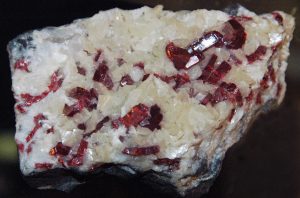The delicate aroma of chocolate as it slowly melts, its silken texture, and the rich, comforting taste, all form a tapestry of sensations that many find irresistible. It’s not merely a fleeting gustatory pleasure; chocolate often beckons with a siren song that encapsulates both the senses and the psyche. The allure is universal, transcending cultures and geographies, making chocolate one of the most coveted confections around the globe. As we embark on this exploration, we aim to traverse the nuanced psychological landscapes that cultivate the cravings for this ancient, yet ever-enticing treat.
The Chemical Composition of Chocolate



Chocolate, a derivative of the cacao bean, is a complex concoction of numerous compounds, some of which are psychoactive. Among them, caffeine and theobromine are mild stimulants that can induce a state of heightened alertness and euphoria. Anandamide, often referred to as the “bliss molecule,” is a neurotransmitter that binds to the same brain receptors as THC, the active ingredient in marijuana, albeit much more weakly. Phenylethylamine, on the other hand, is a compound that the body synthesizes during moments of joy and love, and its presence in chocolate could potentially mimic these feelings when consumed.
These compounds, once ingested, navigate through the bloodstream and interact with the intricate network of neurotransmitters in the brain. They may modulate the release or reuptake of certain neurotransmitters, creating a symphony of neural activations and inhibitions that result in the unique sensation of pleasure and craving.
The Role of Neurotransmitters
Central to the narrative of chocolate cravings are the neurotransmitters dopamine and serotonin. Dopamine, often dubbed the “reward molecule,” is significantly influenced by chocolate consumption. The surge of dopamine in the reward pathways of the brain engenders a sense of pleasure and reward, which can be intensely gratifying. On the other hand, serotonin, the “feel-good neurotransmitter,” may also see its levels transiently boosted with chocolate ingestion, contributing to an elevated mood and a sense of well-being.
The interplay between chocolate and these neurotransmitters crafts a transient euphoria that, over time, could cultivate a longing for the re-experience of such pleasure. The brain, ever so efficient in its pursuit of homeostasis, may thus signal cravings for chocolate as a means to re-engage with this orchestrated dance of neurochemicals, propelling the cycle of desire, indulgence, and gratification. This nuanced interaction delineates the threshold where the chemistry of chocolate melds with the realm of psychology, setting the stage for a rich exploration into the myriad facets of chocolate cravings.
Sensory Appeal
The allure of chocolate extends far beyond its mere taste. It’s a multisensory experience that begins with its smooth, glossy appearance, a promise of the velvety texture that awaits. As it touches the palate, it melts gracefully, coating the taste buds with its rich, full-bodied flavor. The aroma – a heady blend of sweet, bitter, and umami – complements the taste, enhancing the overall sensory enjoyment.
Psychologically, the sensory satisfaction derived from chocolate’s texture, aroma, and taste can evoke a sense of comfort and pleasure. The brain’s reward pathways are activated, reinforcing the desire for this indulgent experience. Moreover, the tactile sensation of chocolate as it melts on the tongue can evoke a soothing, almost meditative state, which further entrenches the craving for this unique sensory journey.
Emotional and Cultural Associations
Chocolate and its Significance:
- Chocolate is often intertwined with various emotional and cultural narratives.
- It’s a symbol of love, celebration, and consolation in many cultures.
- The act of gifting chocolate on special occasions or seeking its comfort in times of emotional distress reinforces its emotional significance.
- The cultural pedestal on which chocolate is placed amplifies its desirability.
- It’s not just a sweet treat, but a luxurious indulgence, an epitome of comfort food that provides a temporary escape from life’s stressors.
- The psychological underpinning of chocolate as a source of emotional solace is well illustrated in its role as a comfort food.
- In times of stress or emotional upheaval, individuals often gravitate towards chocolate for its perceived mood-enhancing properties, establishing a cycle of emotional eating that further reinforces chocolate cravings.
Behavioral Conditioning and Chocolate Cravings



The human brain is adept at forming associations between behaviors and rewards. Over time, the consistent pairing of chocolate consumption with pleasure or emotional relief can foster a Pavlovian response. The mere sight, smell, or thought of chocolate may trigger cravings, driven by the anticipation of the rewarding experience that follows.
The realm of behavioral psychology provides a rich tapestry of evidence linking conditioning to food cravings. Numerous studies have explored the mechanisms through which past experiences of pleasure or reward associated with chocolate consumption contribute to the formation and reinforcement of chocolate cravings. The intricate dance between behavioral conditioning and neurochemical responses underscores the compelling pull of chocolate, making it a quintessential model for exploring the complex interplay between sensory, emotional, and behavioral facets of food cravings.
The Reward System
Chocolate is not merely a sweet indulgence. It’s a key that unlocks a cascade of neurochemical responses within the brain’s intricate reward system. The reward circuitry, primarily driven by the neurotransmitter dopamine, springs into action upon the consumption of chocolate. The dopamine surge in the reward pathways, such as the mesolimbic pathway, elicits a sense of pleasure and satisfaction, the quintessential “reward” that the brain seeks.
This reward isn’t fleeting; it imprints a memory of pleasure within the neural circuits. The cycle of craving, consumption, and reinforcement is thus birthed. Craving propels the individual towards seeking chocolate, and upon its consumption, the brain’s reward pathways are ignited, reinforcing the association between chocolate and pleasure. Each cycle strengthens this association, making the allure of chocolate hard to resist over time.
Addressing and Understanding Chocolate Cravings
Understanding and managing chocolate cravings require a marriage of awareness and strategic action. A mindful approach, where one becomes more attuned to the triggers of chocolate cravings, can be illuminating. By recognizing the emotional, sensory, or situational cues that trigger cravings, individuals can develop healthier coping strategies.
Various strategies exist for managing chocolate cravings in a balanced manner. Substitution with healthier alternatives, mindful eating practices, and cognitive-behavioral techniques can be employed to navigate through cravings. Additionally, stress management and emotional regulation strategies can help address the root causes of emotional eating behaviors associated with chocolate cravings.
Moreover, education about the psychological and neurochemical underpinnings of chocolate cravings can empower individuals to make informed choices. Understanding the transient nature of the pleasure derived from chocolate and the long-term benefits of a balanced approach towards chocolate consumption can foster a healthier relationship with this beloved confection.
Conclusion
The psychological allure of chocolate is a rich blend of sensory, emotional, and behavioral elements, intertwined with the brain’s neurochemical ballet. The journey from craving to satisfaction unveils the complex yet fascinating relationship between the mind and this ancient confection. Encouraging a balanced appreciation of chocolate, acknowledging its cultural significance and its place in personal narratives, paves the way for a nuanced, mindful engagement with chocolate that honors both its enchanting appeal and the essence of moderation.

